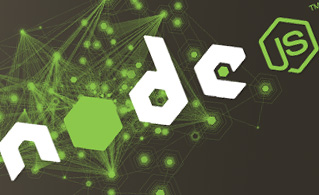Hepsia Advanced Features
The Advanced tab gives you fast access to an array of advanced features, among them the Memcached distributed memory caching system and the Varnish Cache web accelerator, which will help you optimize your web sites and applications without the need to move away from the hosting Control Panel. Depending on the web hosting plan, these features are either included by default or are available in the form of easy-to-get upgrades. InnoDB and NodeJS support is available too.

Varnish
Varnish Cache is a web accelerator also famous as an HTTP accelerator. You can install it in front of any web server that speaks HTTP and configure it to cache the content. Varnish Cache is very, very fast and will increase your website's loading speed. One of the important strengths of Varnish Cache is the flexibility of its configuration language, VCL, which permits you to specify how incoming requests should be handled.

Memcached
Memcached is a generic memory object caching system for increasing the load speed of dynamic database-driven websites. It is used to reduce the number of times an external data source (such as a DB or API) is read by caching data and objects in RAM. The Memcached memory object caching system uses a client'server architecture. The Memcached memory object caching system is employed by some of the most frequently visited web sites on the Internet and is supported by popular web apps like Joomla and WordPress.

Node.js
Node.js is a software platform for building highly scalable network applications. Built on Chrome's JavaScript runtime, Node.js uses an event-driven, non-blocking input/output model that makes it lightweight and effective, excellent for real-time data-heavy network applications. Node.js uses Google's V8 JavaScript engine, libUV, and several built-in libraries.
InnoDB
InnoDB is the default database engine for the MySQL open-source relational database management system. A storage engine is the principal software component that a database management system uses to create, read, modify and delete data from a database. The latest release of InnoDB features considerable improvements in performance, reliability and usability. InnoDB provides the standard ACID database transaction features, as well as declarative referential integrity support. It is included as standard in most binary distributions from MySQL AB.
| SHARED HOSTING | KVM VPS | OPENVZ VPS | SEMI-DEDICATED PLANS | DEDICATED SERVERS |
| 20 GB storage | 20 GB storage | 40 GB storage | Unlimited storage | 240 GB storage |
| 125 GB bandwidth | 1 TB bandwidth | 1 TB bandwidth | Unlimited bandwidth | 10 TB bandwidth |
| 1 website hosted | Unlimited websites hosted | Unlimited websites hosted | Unlimited websites hosted | Unlimited websites hosted |
| 30-Day Free Trial | 24/7/365 support | 24/7/365 support | 30-Day Free Trial | 24/7/365 support |
| start from $7.00/mo | start from $11.00/mo | start from $13.00/mo | start from $20.00/mo | start from $40.50/mo |